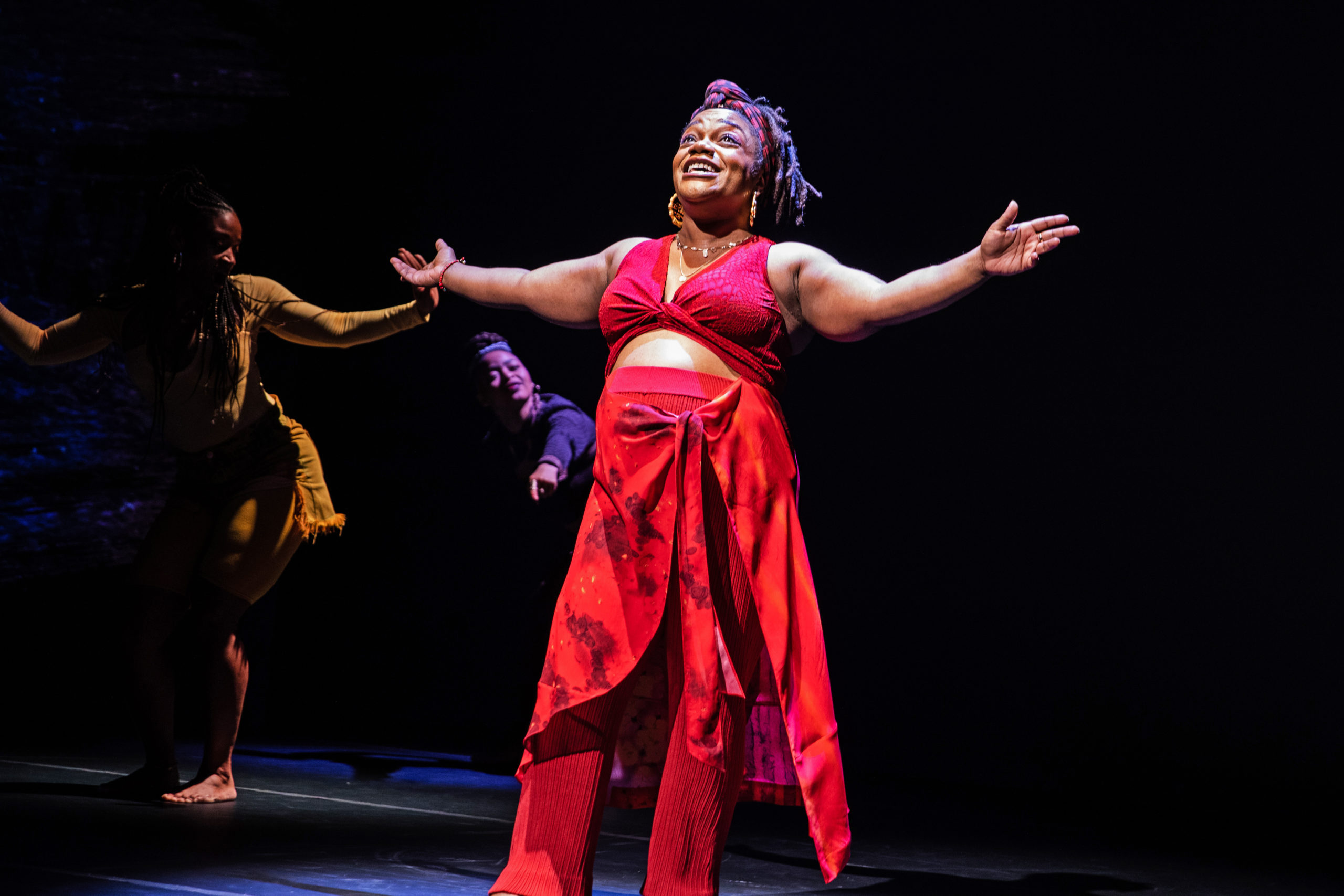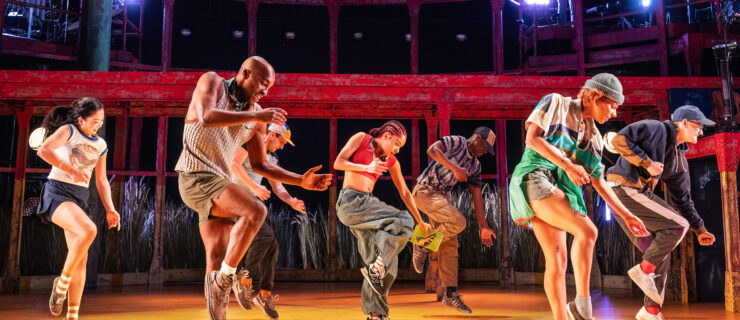This Broadway Star Dances 8 Shows a Week—While 38 Weeks Pregnant
Eight times a week, Kenita R. Miller wraps her hair in a red scarf, breathes and stretches, and takes the stage as part of the first Broadway revival of Ntozake Shange’s legendary choreo-poem for colored girls who have considered suicide/when the rainbow is enuf.
As part of the ensemble cast of seven Black women, Miller barely leaves the stage for the full 90-minute run time. Directed and choreographed by Camille A. Brown (nominated for two Tony Awards for her direction and choreography), the play is athletic and rigorous—jumping, skipping, stomping, drumming on bodies, rolling on the floor, pushing out breath to communicate through sound in addition to speech. As Lady in Red, Miller goes through the emotional wringer, delivering one of the most tragic poems of the piece, “Beau Willie Brown,” about an abusive relationship and a woman who watches her children die at the hands of their father, her ex-lover. Managing all this is impressive enough, but (as of publication) Miller is also just over 38 weeks pregnant.
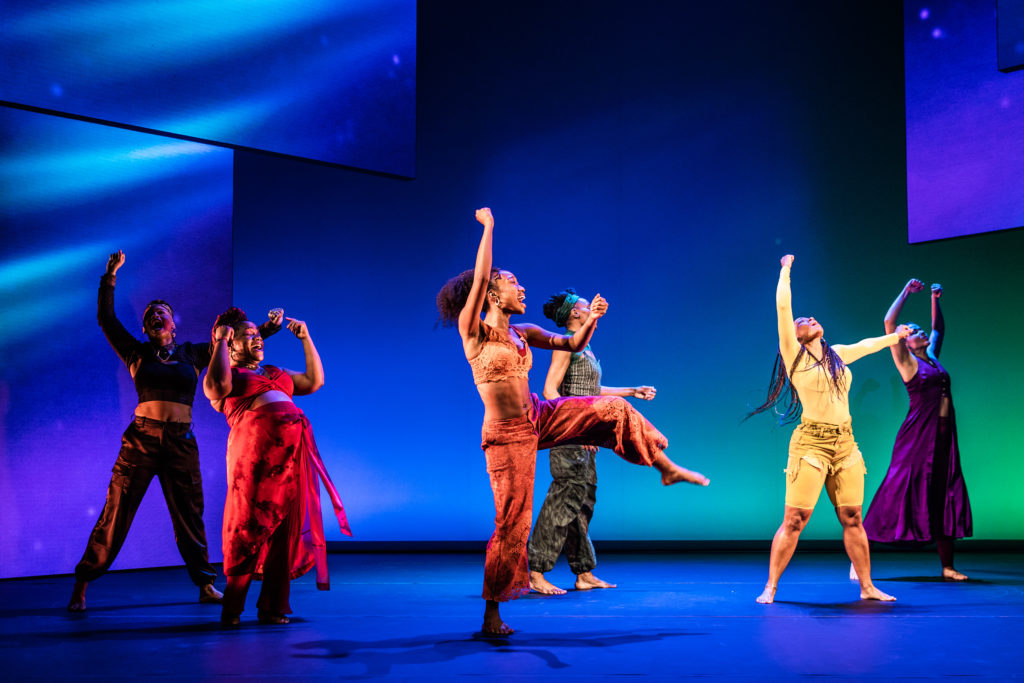
“My doctor was like, ‘We’ll wait to the 30th [of May], but right now where you are, she’s viable, so she can come whenever she wants,’ ” says Miller. “Getting ready for the show I’m like, ‘Little girl, do not come onstage, do not make your entrance onstage.’ ”
Miller wants to give herself over to every last performance of this work (which was set to close early, on May 22, but has been given an extension until June 5—thanks to the boost from a Twitter campaign and seven Tony nominations, including one for Miller). Still, she says that listening to her doctors and her body is the priority.
“I wanted to be a part of this production for a long time, and my husband and I have wanted a child for a very long time,” says Miller. “It’s just so many dreams coming true. I don’t take it for granted at all. The nomination is a huge gift, but she’s the prize.”
Miller and her husband have been married 17 years and had “given up” on conceiving a child, but her community and cast have carried her through this moment of great surprise. “I’m so grateful, and to have such a tribe of women that every day—from day one—they have lifted me up, made me feel really strong and supported.” Brown leads that tribe.
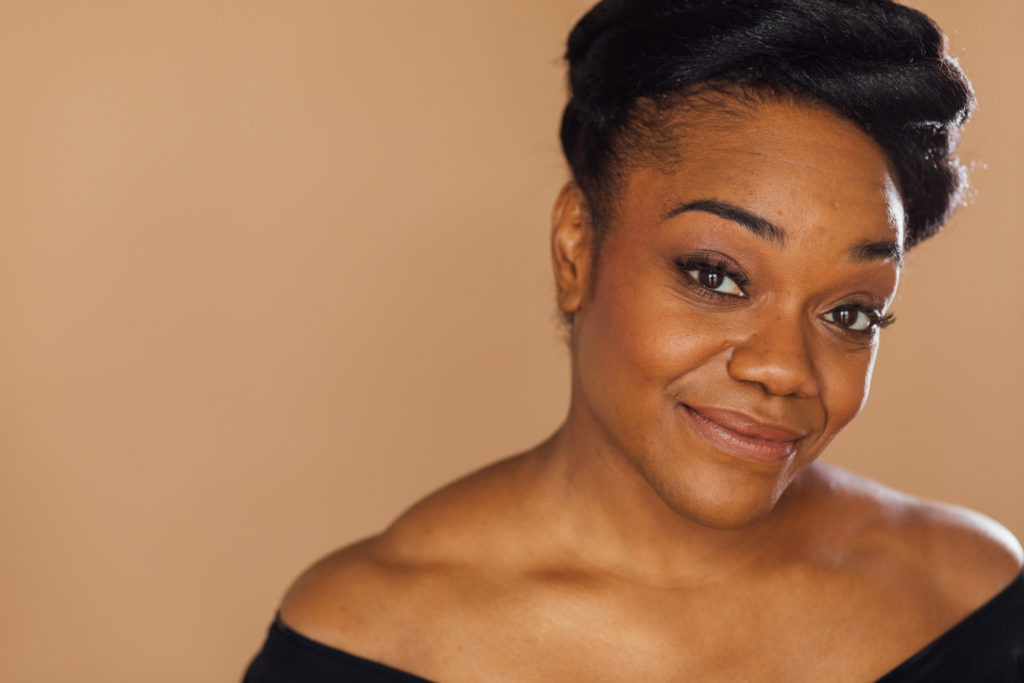
Miller and Brown worked together on the Broadway revival of Once On This Island, and Brown asked Miller to do a workshop of for colored girls before casting the production. That’s when Miller found out she was pregnant.
Miller discreetly shared the news with Brown, who said they’d take it one step at a time. “I still had to audition for it. It really came down to the ability to tell the narrative as well as do the physicality. But from the beginning, she expressed her belief in me.”
“I had never been pregnant before, and she’d never worked with a pregnant woman before,” Miller continues. “But she said, ‘As long as your doctors say it’s okay, if you’re safe, then let’s [go].’ ”
This exchange in and of itself is an anomaly in theater—certainly on Broadway. “I had a woman come up to me after the show and she said, ‘You don’t know what seeing you up there pregnant did for me, because I stopped performing because I got pregnant, because I didn’t think I could do it and I didn’t think I would be hired,’ ” Miller recalls. “You have in your mind: You’re pregnant; you got to sit down at this point. But she said, ‘To see you up there just made me like ‘Wow.’ That was really special to me.”
Miller’s presence on the stage of Broadway’s Booth Theatre, with her visible nine-month pregnant belly, declares: Artists do not have to “sit down” while their bodies change. They do not have to surrender their artistry to pregnancy and motherhood. Miller is proof that creative teams, and mothers themselves, must reconceptualize what is possible.
Since the early rehearsal process, Miller hasn’t modified her choreography beyond making minor adjustments to accommodate the baby bump. Her body, even while changing, is used to it. In fact, movement has been beneficial to Miller and her baby. “Before I started this job [and early in pregnancy], I was not doing anything and my body felt awful. I felt stiff. I didn’t feel connected to my physicality at all,” Miller says. Now, “I feel like I have more energy. I feel like I’m listening to my body more closely than ever, which makes me feel closer to my baby. Even talking to my doctors and staying in communication with them so much, they’re always asking ‘How active is she? Is she moving?’ And I’m like, ‘Yes, she moves a lot.’ ”
It’s a different take on for colored girls for audiences, too, as no major production has featured a visibly pregnant woman. “I don’t know the show any other way, except to think that these are archetypes of women and there’s so many different types of us and that me being pregnant is just a representation of another side of a woman,” Miller says. “That’s a beautiful thing about the colors of the rainbow—even the primary colors have different hues.”
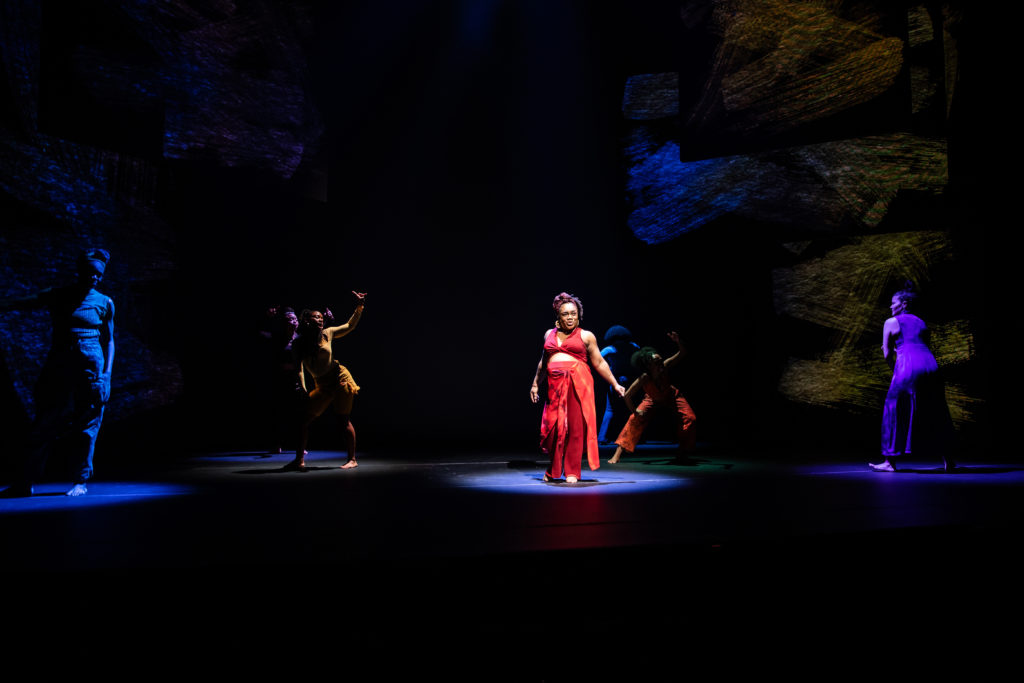
These hues add nuance and stakes; a pregnant woman crying out for the loss of her children lands with profundity. The image shakes viewers into noticing the process of creating life as we talk about losing it. The end of the monologue—a ritual known as the “laying on of hands,” where all the women of the rainbow touch Miller to heal and empower her—reads with new sacredness.
“She’s a little human being who’s going to not just experience joy, but she will experience pain,” Miller says of her baby. “But it is the resilience and the strength…It’s about how we pick ourselves up or how we, innately as women, always find a way to lift another woman up. That’s what I’m hoping she absorbs. That’s what affects me.”
